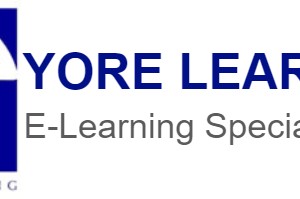The Rationale Behind Online Food Safety Courses
Online Food Safety Courses | According to the World Health Organization (WHO), there more than 200 known diseases that are transmitted via food. WHO recommends five keys to safer food:
-
-
- Keep clean
- Separate raw and cooked food
- Cook thoroughly
- Keep food at safe temperatures
- Use safe water and raw materials
-
Food safety is a problem in both developing as well as developed countries. It causes a strain on our health care systems, it severely affects infants, young children, the elderly and the sick. It creates a viscous cycle of malnutrition and diarrhoea and other health care problems. Consequently, food borne illness hurts our national economy, further development and international trade.
The major cause of foodborne illness is a lack of procedures in place to prevent it. To achieve well-trained staff, at least two aspects must be present:
Knowledge. Set up a master training schedule with topics to be covered such as personal hygiene, sanitary food handling practices, safety, pest control, cleaning and sanitizing, etc. Have a written Policy and Procedure Manual and ensure a task analysis of each job is included in the position description. This guarantees consistency and quality in the tasks they must accomplish and it assists employees in letting them know what is expected of them.
Motivation. By motivating your employees you will increase the chance that the information you present to them will be used. Employees learn best when they actively participate in the process. Remember that people learn at different speeds and with different training methods. In addition, have training sessions at convenient times so most staff can attend and If necessary, provide overtime pay.
Ten Rules of Safe Food Handling
Managers should require food handlers to follow the list below in the order of the flow of food, to assure safe food:
-
-
- Require strict personal hygiene from all employees, including frequent hand washing.
- Identify all potentially hazardous foods on your menu and write out your food handling procedures. Make these written procedures part of employee training, every-day tasks, and regular self-inspection.
- Obtain foods and other supplies from reputable, approved sources.
- Observe the rules for time and temperature and for preventing cross contamination in storing and handling food prepared in advance of service.
- Keep raw product separate from ready-to-eat food.
- Avoid cross contamination of raw and ready-to-eat foods from hands, equipment and utensils. Clean and sanitize food contact surfaces and equipment before and after every use, after an interruption, and at least every four hours during continual use.
- Cook or heat-process food to above the recommended minimum temperature.
- Keep hot foods hot and cold foods cold. Store or hold hot foods at 135F or higher and store or hold cold foods at 41F or lower.
- Chill cooked foods rapidly to 41F within four hours.
- Reheat food to an internal temperature of at least 165F for at least 15 seconds within two hours.
-
Remember: It’s up to you, the food service manager, dietitian, dietetic technician or certified dietary manager to train your employees in these safe food-handling techniques so that serving quality, safe food can be assured in your establishment.
Yore Learning | E-Learning Specialists UK – Online Food Safety Courses
It is incredibly important to ensure employees who work in the preparation of food have comprehensive knowledge of food hygiene standards. The law requires food business operators to make sure their workers get the proper education in food management. Whoever is in charge of keeping company food safety precautions up to date, must also be knowledgeable about the correct type of training for those involved.
What this means is that senior staff members – including mid and top management, food hygiene coaches and head chefs – must engage in the correct food safety training to make sure they relay the right training onto each of their staff who manage food. Yore Learning provides individuals and companies with the training they need to work to a high professional standard in the food industry. Our Online Food Safety Courses will provide a comprehensive understanding of food safety and the management of food in a business.




